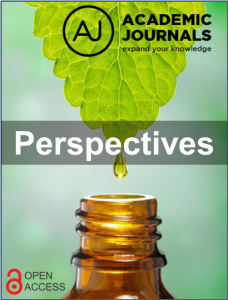S. A. Teruya and S. Bazargan-Hejazi
Charles R. Drew University of Medicine and Science
DOI: https://doi.org/10.5897/PP2018/0006
Copyright © 2018 Author(s) retain the copyright of this article.
This article is published under the terms of the Creative Commons Attribution License 4.0.
The Immigrant Health Paradox generalizes that recently-arrived immigrants enjoy better health than people of the same race and age who are born in the destination country. They are also thought to have better health than that of fellow immigrants who arrived earlier, and have spent more time there. Some researchers believe that immigrants preserve the healthier diets and more active lifestyles from their native countries, and in general suffer less from stress. Among other factors, these are thought to provide a beneficial and protective effect.
The Hispanic Health Paradox says essentially the same thing for people from different Hispanic or Latin countries, e. g. Mexico, Cuba, and Puerto Rico. However, there is a noticeable difference in the type and level of health benefits afforded different Hispanic ethnicities. Some studies report that recent immigrants from Mexico, for example, have better mental health, and suffer less from substance abuse, compared to non-immigrant Mexican-Americans of the same age. However, other studies say that U.S.-born Mexican-Americans enjoy better mental health functioning than Mexican immigrants. To add to the uncertainty, these “Hispanic” mental health benefits do not appear to extend to Puerto Rican and Cuban immigrants.
If immigrants do indeed enjoy better health, what causes these differences and inconsistencies? Moreover, why does their health appear to be basically the same with people of the same race and ethnicity who are born in the U. S. by age 65? Part of the answer may rest in the way immigrant health data are collected and organized. For example, researchers sometimes combine different groups of people for study. However, it is important to remember that people from Mexico, Cuba, and other “Hispanic” or Latin countries differ in many significant ways. “Hispanics” may not even speak the same Spanish; some use different dialects or converse primarily in an indigenous, native language. We should also consider that a single, 18 year-old male from a remote village in Guatemala will differ significantly from a married, middle-aged woman from Buenos Aires, Argentina. It is therefore equally important not to single out different Hispanic groups for study, and assume that what we find in each is applicable to all other Hispanic ethnicities and subgroups.
We also cannot know the true health of immigrants if all their medical conditions and illnesses are not reported, tracked and analyzed. For a number of obvious and not-so-obvious reasons, we may not find many immigrants, or certain groups of immigrants, in clinics, doctors’ offices and other settings where studies often take place. Immigrants may also be reluctant to participate in studies, surveys or interviews. Culture and tradition can prevent them from admitting to drug use, mental illness or other conditions. It can also be difficult to follow up on their progress and health. An undocumented immigrant may be considered “healthy” because he never completed a follow-up visit, for example. In fact, though, he may have just returned unnoticed to his home country, never having gotten well.
In considering all the aforementioned factors, the simplest explanation for the immigrant and Hispanic health paradoxes is the general good health of newly-arrived immigrants. We might logically assume that these people must be young and healthy in order to travel, adjust, adapt, and work. The importance of this initial good health becomes clear when we compare these immigrants to an unexpected group: Our own homeless population in the USA.
According to the Los Angeles Mission, a charitable organization on Skid Row, there are over 53,000 people without permanent shelter in that city alone. These “survivalist immigrants” have migrated, and continue to migrate to different parts of Los Angeles, seeking resources, shelter and assistance. They are often troubled, disabled, disadvantaged and impaired, and unable or unwilling to work. However, the majority are native-born, U. S. citizens, and presumably have better access to government-funded assistance programs than non-citizen immigrants, especially the undocumented. The homeless face many severe challenges, but are also less likely to suffer from the discrimination and intolerance directed at immigrants from foreign countries.
In contrast, those we normally associate with the Immigrant and Hispanic health paradoxes are “aspirational,” foreign-born immigrants. Almost all seek economic opportunity, and/or freedom from oppression and violence. Both the homeless and aspirational immigrants have personal stories of hardship and suffering. For both groups, it can also be difficult to collect accurate health data, and track any improvement or decline. Homeless people, though, are more likely to start off at a health disadvantage; many have lost their homes due to serious or catastrophic illness, and huge medical bills. Pre-existing mental and physical conditions are also more likely to remain untreated and uncontrolled, and they may develop new illnesses as a result of their living conditions.
Through this “homeless” comparison, we see that simply migrating from one area to another does not in itself impart any health benefits. The Immigrant and Hispanic health paradoxes therefore seem to rest largely on being a young, healthy and “aspirational” immigrant. This would also explain why these health advantages largely evaporate in middle and old age; these people eventually grow old, and suffer from the same conditions and ailments as non-immigrants of the same age, race and ethnicity.








Discussion about this post